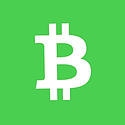Outlook:
Today the data menu includes March housing starts, the Philadelphia Fed survey and the usual Thursday jobless claims. Meanwhile, Fed speakers abound and we are starting to get comments from the officials attending the World Bank/IMF meeting and G-20 starting to-morrow and running into the weekend. German FinMin Schaeuble has an op-ed in the New York Times today—what, the Wall Street Journal turned him down?
There is too much material and all of it of real interest. Schaeuble, for example, says Germany is not punching below its weight. The European crisis is one of confidence and the need for structural reform, which Germany has achieved. And monetary policy is no substitute for fiscal sanity.
The hawkish St. Louis Fed Pres Bullard (non-voter) said it’s time to raise rates. “There’s a mismatch between the monetary policy side, which is still at emergency settings, and the economy itself, which is arguably reasonably close to normal. Now may be a good time to begin normalizing monetary policy so that it is set appropriately for an improving economy over the next couple of years.” The longer the Fed delays, the more likely are asset bubbles, and “they’ve been a killer for the U.S. economy in the last 20 years.” As for the too-strong dollar, forget it. “Real exchange rate movements are not reliably associated with future [gross domestic product] growth in the U.S. data since 1983.” We don’t know if that is right but it’s interesting that Fed officials are doing some research on the dollar, which is arguably not their business.
The dollar is like the weather—everyone talks about it but nobody can do anything about it. Yellen men-tioned the dollar and the FOMC mentioned trade and external conditions, and suddenly the market start-ed chattering. What, exactly, do analysts think the Fed might actually do about the dollar? The only de-duction one can make is that it would postpone/delay the First Rate Hike. And this would be inconsistent with its mandate, which is directed entirely to domestic conditions. We admit that just because the Fed never did it before doesn’t mean it can’t do it now—and excuses would be easy to find, specifically the rising dollar cutting import prices and thus risking deflation. But it’s a stretch to think the Fed would make decision primarily because of the dollar.
The real key to the future of the dollar is the fixed income market. We guess it has meaning that two sets of bad data—retail sales and industrial production—pushed the yield down but then the yield bounced right back to where it started. This may mean a yield floor around 1.80-1.85%. Market News notes that the 1-year bottomed at 1.809% on April 3 (a payrolls date). But the yield also jumped to 2.2575% a month earlier on the March 6 payrolls release. Drat. This means payrolls holds the key to a lasting yield rise. And we know all the problems associated with payrolls.
The yield differential is quoted by Bloomberg at 178 points with the US 10-year at 1.88% at 6 am ET and the German Bund at 0.10%. We have been writing for a very long time that the US premium has to be 200-250 bp to overcome the euro’s magic and the long-standing historic bias against the dollar. It may take longer than we thought, but this is exactly what is happening. Nothing is inevitable in markets, but the current upward euro correction is doomed. Alas, nobody can name an ending point. We could even get an abnormally long correction surpassing various resistance levels, if Greece gets let off the hook, for example. But over the next month or two, we expect the euro downtrend to resume, and for very good reasons.
This morning FX briefing is an information service, not a trading system. All trade recommendations are included in the afternoon report.
Recommended Content
Editors’ Picks
EUR/USD holds positive ground above 1.0750 ahead of Eurozone PMI, PPI data

EUR/USD trades in positive territory for the fourth consecutive day near 1.0765 during the early Monday. The softer US Dollar provides some support to the major pair. Traders await the HCOB Purchasing Managers’ Index (PMI) data from Germany and the Eurozone, along with the Eurozone PPI.
GBP/USD rises to near 1.2550 due to dovish sentiment surrounding Fed

GBP/USD continues its winning streak for the fourth consecutive day, trading around 1.2550 during the Asian trading hours on Monday. The appreciation of the pair could be attributed to the recalibrated expectations for the Fed's interest rate cuts in 2024 following the release of lower-than-expected US jobs data.
Gold price rebounds on downbeat NFP data, softer US Dollar

Gold price snaps the two-day losing streak during the Asian session on Monday. The weaker-than-expected US employment reports have boosted the odds of a September rate cut from the US Federal Reserve. This, in turn, has dragged the US Dollar lower and lifted the USD-denominated gold.
Bitcoin Cash could become a Cardano partnerchain as 66% of 11.3K voters say “Aye”

Bitcoin Cash is the current mania in the Cardano ecosystem following a proposal by the network’s executive inviting the public to vote on X, about a possible integration.
Week ahead: BoE and RBA decisions headline a calm week

Bank of England meets on Thursday, unlikely to signal rate cuts. Reserve Bank of Australia could maintain a higher-for-longer stance. Elsewhere, Bank of Japan releases summary of opinions.